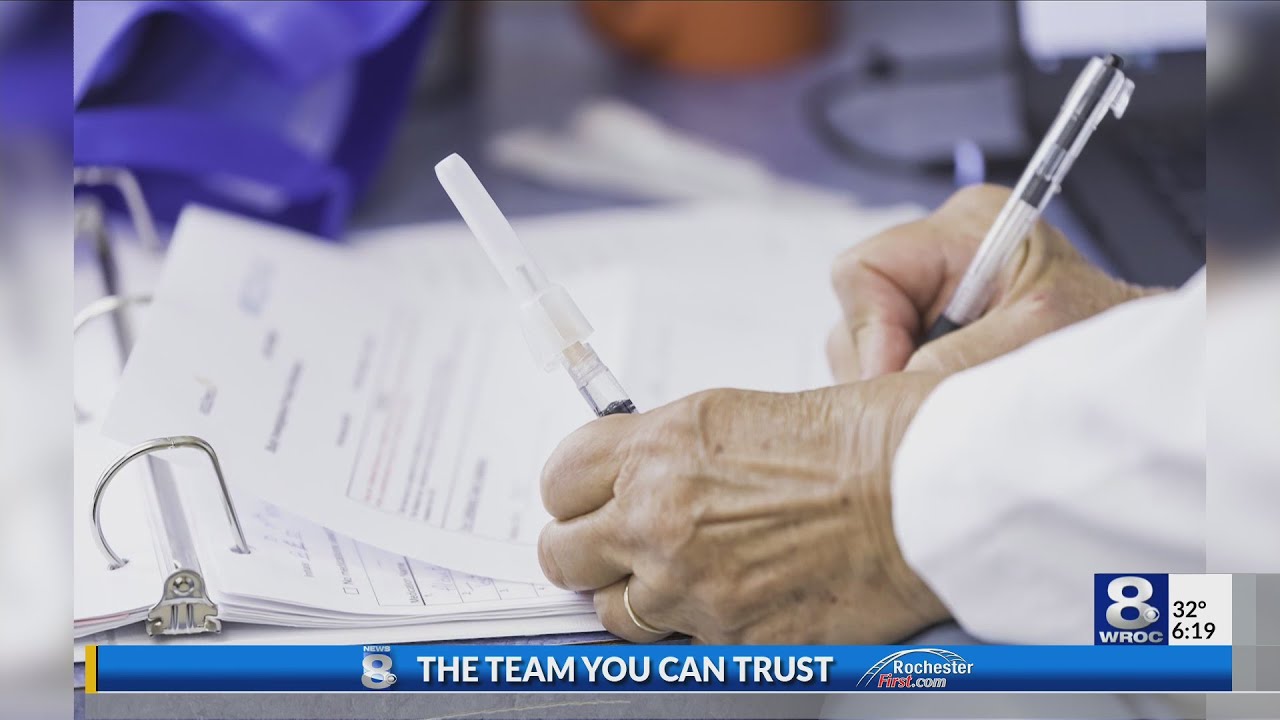
ROCHESTER, N.Y. (WROC) — The University of Rochester Medical Center played an important role in the development of the Pfizer COVID-19 vaccine.
URMC Infectious Disease Specialist Dr. Ed Walsh discussed that role and the timetable for the vaccine’s roll out Wednesday during our Greater Rochester Enterprise Why ROC conversation.
“URMC has been involved with respiratory viral vaccines for many decades,” explained Dr. Walsh. “Dr. Ann Falsey and I, who have worked at the University of Rochester for many years have studied respiratory viruses and Pfizer has worked with us over the years on other viral pathogens, so they gave us a call very early on, back in late March or early April, to help their at least initiate their Phase One studies.”
In this case, time was a precious commodity. “It was a pretty collaborative arrangement we had with the Pfizer folks,” Dr. Walsh said. “We had four medical centers that were involved in this Phase One study and we needed to move very quickly and so we would have frequent phone calls with them.”
In nine months the process went from conception to reality as Americans receive the first doses of the Pfizer vaccine. Dr. Walsh said, in some respects, the speed of the process is not surprising. “Some very important and critical breakthroughs had been made prior to the development of the pandemic. Essentially they had these vaccines ready to go and I think you could argue that within a week of the sequence being identified these vaccines were ready for animal testing so that part of it moved very quickly. The credit for moving the clinical trials goes to not just the companies and the investigators but also to the FDA because they were meeting literally 24/7 – seven days a week – and were very responsive to needed changes and evaluation of Phase One and the Phase Two studies.”
Dr. Walsh said the introduction of additional vaccines will dictate how quickly all Americans are able to be vaccinated. “Unfortunately we can’t give a firm time frame for that because it really is dependent on the availability of the vaccines. We now have two, Pfizer and Moderna. We anticipate a hundred million or more of each of those sometime this coming summer but then there is also the need for the other vaccine studies that are going on – the Astrazeneca and the J&J or Johnson – we really need those studies to be completed because that will substantially add to the number of vaccines that we have, the amount we have, the ability to distribute them and to administer them.”
For more information about URMC and the vaccine, visit the following link:
https://www.urmc.rochester.edu/coronavirus/coronavirus-vaccination/vaccine-distribution.aspx
For more information about Greater Rochester Enterprise visit RochesterBiz.com.


